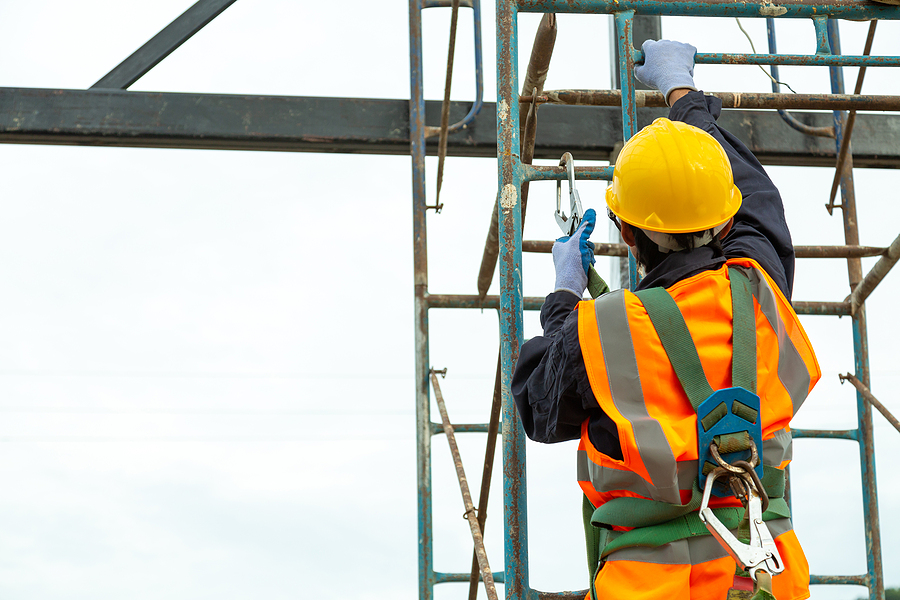Top Safety Precautions to Follow for Workplace Fall Protection When Working at Heights

Several fall and safety precautions are outlined in this section. These best practice guidelines for working at height aren’t all-inclusive, but they can help many businesses. A look at the hierarchy of hazard control will reveal that this list includes several levels.
You can speak with the safety consultants at Safety Counseling for more in-depth assistance.
Analyze the safety of your workplace
The term “job safety analysis” refers to breaking down a job (or a construction site) into its parts to ensure worker safety. The more information you include, the better.
Make a note of any areas that need attention after you’ve completed the tasks one by one. There are many reasons to consider providing working from heights training for your employees, including that some jobs require a significant amount of work to be done at an altitude.
Recognize the Possibilities for Risk
It is the responsibility of every employee to keep an eye out for potential dangers in their workplace. Educating your employees on spotting potential hazards is one way to ensure their safety on the job and prevent more significant problems from arising.
Maintain Strict Compliance with All Safety Regulations
All safety precautions should be enforced by managers while working at heights, and they should also resist the temptation to ease up on enforcement over time. There is no substitute for enforcing the rules and remaining disciplined in the face of these dangers.
Make Sure You’re Wearing the Right PPE
Whenever necessary, managers should supply PPE. However, fall protection safety equipment is not enough. Employees need to be educated on how to use and inspect it regularly.
Employers should do everything they can to ensure that eye and face protection works appropriately. Detailed and frequent inspections are necessary to ensure the safety of employees and customers. If your company has a Height Work Permit, you can use it to include a review.
Obtain Accurate Information Regarding Drop Distances
This may seem like a trivial point, but it is easily overlooked. To assume that a fifteen-foot harness will suffice for a twenty-foot fall would be intuitive.
However, the height of the worker and the amount of slack in the harness or anchor point due to the force of the fall would be overlooked.
A six-foot-tall worker would have fallen to the ground if he had worn the useless harness. If fall distances are miscalculated, a fall protection plan for working at height is pointless.
Consider Using Safety Barriers Whenever Possible
When it comes to protecting workers who are working at a height, guard rails are an excellent choice. By taking this measure, workers can protect themselves without actively doing anything. Without a safety harness, they may even be able to work at height safely.
Managing and inspecting additional equipment can be a time-consuming step that should be avoided if possible. Working inside the railing is an option.
To ensure that the guard rails are appropriately installed, workers must be adequately trained and outfitted with the appropriate personal protective equipment (PPE).
Properly use Ladders
When misused, ladders pose a severe threat to one’s safety. Three things should always be kept in mind when using a ladder:
- Set the ladder three steps higher than you’re attempting to reach.
- Place the ladder one foot away from the structure for every four feet it rises.
- Be sure to always have three points of contact (one hand and both feet, for example).
OSHA ladder safety training may be one of your top priorities when providing workplace safety tips and training.
Identify the Correct Anchor Points
In the event of a fall, the anchor points where the safety harnesses are attached must hold. There is a significant amount of force in a fall. An engineer or a solid structure like a structured beam should be used as the anchor points.
Conduct Routine Inspections of Your Equipment
To ensure that your equipment is functioning correctly, conduct regular inspections. Equipment that raises workers to a height, such as ladders, cherry pickers, or other machinery, requires this inspection.
Maintain Your Workout Routine
Working at heights, safety instruction should be provided regularly, especially as new employees are brought on board or as the working environment evolves. This could be a formal training session or something as simple as a daily reminder.
